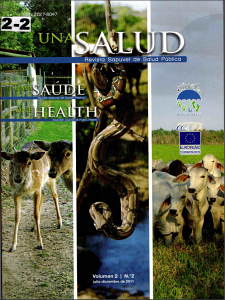Abstract
Introduction: The presence of antibiotics residues in food is a potential problem in public health. These residues can affect people trough the food chain because of mismanagement in the therapy of diseases in animals. For the detection of antibiotics in food, basic information about the antibiotics frequently used in veterinary is needed. Objetive: To identify the antibiotics most frequently used in beef and dairy farming in Lima-Peru. Materials and methods: Information was gathered from the antibiotics used in treatments in five beef and dairy farms, during the years 2008 and 2009, through the revision of sanitary records. Results: Of 18,197 treatments registered, 69.1% (12.573) corresponded to beef farming and 30.9% (5624) to dairy farming. Pneumonia and diarrhea were the principal sanitary problems in beef farming, being gentamicin, penicillin, streptomycin, florfenicol, tylosin and oxytetracycline the antibiotics mostly used in pneumonias; and enrofloxacin in diharreas. Mastitis was the principal sanitary problem in dairy farming. Enrofloxacin, penicillin and streptomycin were the most used treatments. Diagnostic of the bacterial agent involve in the pathologic process by laboratory and the antibiotics most adequate for the therapy of it, is not a common practice. Conclusions: The antibiotics frequently used in the therapy of pathologies in beef and diary farming are confined to a reduced group and they are repeatedly used. In that sense, monitoring the possible appereance of bacterial resistence to antibiotics is needed.Downloads
Download data is not yet available.



